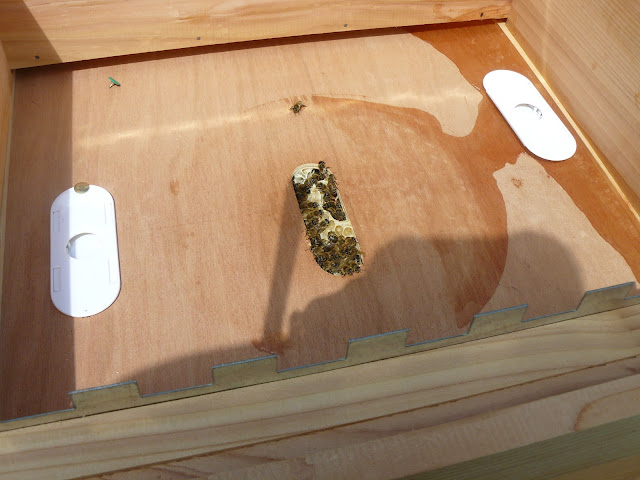Yesterday was my first apiary inspection. It was as quick as I could be as I didn't want to disturb the Bees too much. I was unsure how much of the foundation they would have drawn out into comb so I took the frames for the super box with me just in case they needed more room to expand.
Upon arriving at the apiary I got all my equipment out of the car, which included my hive tool, smoker, smoker fuel, wind proof lighter, a couple of frame spacers and a small box for collecting any brace comb that was removed. The smoker fuel I was using was rolled up cardboard which I made sure had no glue or anything on. I put the cardboard into the smoker and using the wind proof lighter got it a blaze then set it down for 5 minutes while I put my suit on.
When suited up I entered the Bee enclosure and puffed a little smoke over the front of the hive and then waited a few minutes to allow the smoke to calm the Bees. The next step was to remove the roof and check on the feeder bucket, which was empty; unfortunately I hadn't brought any more syrup with me so couldn't add any more.
To access the hive I then used my hive tool to prise the crownboard away from the brood box; I was surprised at how quickly the Bees had glued it all together with propolis. Once inside the hive I puffed a little more smoke over the top to encourage the Bees to go down onto the frames then started taking out the frames to inspect.
 |
| The underside of the crownboard with brace comb. This was scraped off and collected. |
 |
| Freshly drawn out comb full of sugar syrup |
The next comb removed, after the above pictured, had new eggs in but were too small to photo. By seeing eggs it told me I still had a laying Queen. I carefully replaced the frame and continued my inspection. On the 3rd frame with brood on I managed to find the Queen. She is marked with a spot of white paint and visible in the photo below. I have named my first Queen Beeatrix the first!
 |
| Can you see the Queen? |
When I got to the last frame provided in the nucleus hive I attached a couple of frame spacers as the frames I have are self spacing Hoffman frames compared to normal frames from the nucleus.
 |
| The new frame with spacer added to make it hang far enough away from it's neighbour |
When I'd checked the frames I put the back together as quickly as I could. I noticed something in the hive that wasn't supposed to be there.....A wasp!
 |
| Wasp feeding from a bit of leaked sugar syrup. I crushed it so it didn't tell it's friends and return! |






















































